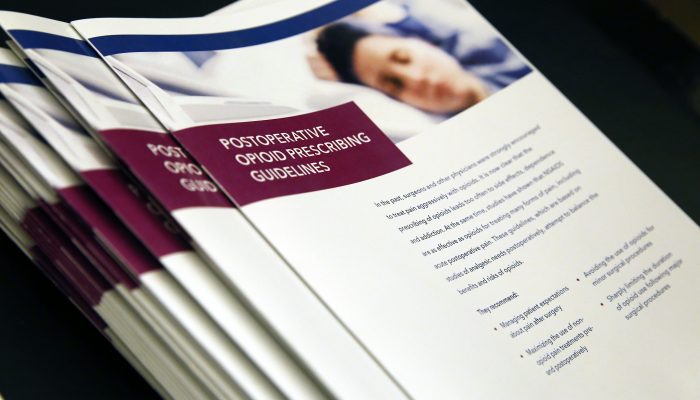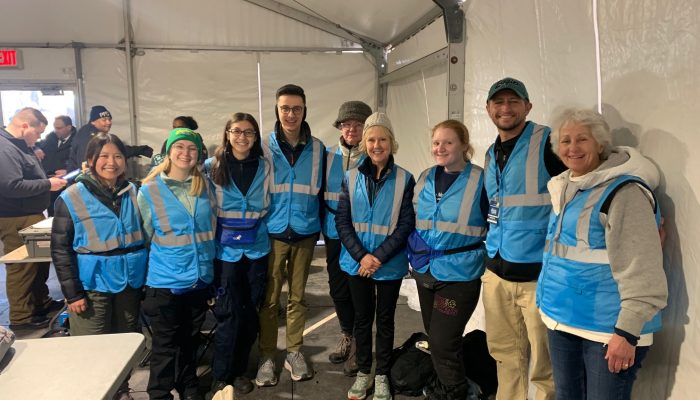Last decade, Philadelphia was ready to declare HIV functionally eradicated among a group of people previously considered at increased risk of HIV exposure: people who inject drugs (PWID). Then, it all started to reverse as America’s nationwide opioid crisis took hold. New diagnoses of HIV among PWID started to increase, with new diagnoses of HIV increasing 151% percent of what they were in 2016 by the end of 2019. To address this distressing trend, the Health Department declared an HIV outbreak among PWID in 2018.
This blog contains recommendations or practice implications developed by the Health Department’s AIDS Activities Coordinating Office using data from the National HIV Behavioral Analysis Survey (NHBS) along with other data. More comprehensive data, including the companion fact sheet to this blog, are on the City’s website.
It’s important to note that any observations of behavior from self-reports that we use, especially regarding a behavior like injecting drugs, are estimates providing a general idea where things likely are or are going. They use science, insights from our epidemiologists and other experts, and public health best practices.
Practice implication: Medical and other service providers must discuss substance use and injection behaviors with everyone.
What many people think a PWID looks like is different than the reality. A common, unscientific misconception is that PWID identify as heterosexual and are one race.
Although nearly three quarters of PWID interviewees in NHBS were white, a quarter were people of color. Similarly, there were more LGBTQ people among PWID than compared to what we estimate is their share of the general population.
It’s important to note that Health Department researchers say that PWID who are living with HIV are less likely to become what’s commonly called “undetectable” which means reducing the amount of HIV virus to the point where there is so little virus left that it is undetectable in the blood. Having access to testing and treatment and staying linked to that care is critical to reaching viral suppression. If achieved, viral suppression provides a typical longevity for HIV-positive people and also makes them unable to transmit HIV to sex partners.
Practice implication: PWID should test more frequently for HIV.
Doctors, providers, and others are missing opportunities for HIV testing in PWID. While there is a high lifetime rate of HIV testing across PWID, that is 96 percent have had an HIV test at some point, about 30 percent of PWID haven’t been tested in over a year.
The Health Department currently recommends PWID test for HIV every three months. Given the local HIV outbreak among PWID, repeated and frequent testing is an important intervention that helps people be aware of their status and, if diagnosed with HIV, link them with care that both extends life and prevents ongoing HIV transmission.
Philadelphia believes in a status-neutral approach. This means that all people, regardless of HIV status, receive the same level of engagement starting with an HIV test. If someone tests HIV-negative, then providers should start a conversation about PrEP and HIV prevention overall. If someone tests positive, then providers should engage over HIV treatment.
Reducing the number of PWID who have HIV but are unaware of their status is critical to ending the HIV outbreak in PWID in Philadelphia as well as the epidemic overall. You can learn more about this in the community plan, “Ending the HIV Epidemic in Philadelphia,” on the Health Department’s website.
Practice implication: Medical, substance use disorder, and HIV service providers must talk about sexual behaviors with and increase STI testing in PWID.
Just like people who don’t inject drugs, PWID engage in behaviors that can increase the risk of HIV and STI exposure and it’s important for medical, substance use disorder, and HIV service providers to talk about sex with their PWID patients.
Some of these behaviors include having multiple sex partners or having sex while not on PrEP, often a single pill taken once per day that prevents HIV, or while not using a condom. Other behaviors that increase the likelihood of HIV acquisition include participation in sex work or survival sex; this means either receiving or exchanging sex for money, drugs, or other goods.
In some cases, PWID engage in sexual behaviors at higher rates than the general population.
Yet, across local PWID, STI testing is low with only 3 in 10 men and 5 in 10 women getting an STI test within the last year.
Practice implication: We must all promote PrEP more among PWID as well as educate providers who work with PWID.
From 2015 to 2018, we saw a 400 percent increase in the number of PWID who know about PrEP, a treatment that usually involves taking one pill once per day that prevents HIV. Specifically, while only about 10 percent had heard of PrEP in 2015, about 40 percent knew about PrEP in 2018.
Despite this and PrEP’s high efficacy at preventing HIV acquisition, less than 10 percent of PWID had used PrEP in the last year in 2018.
Practice implication: Access to Hepatitis C testing and treatment should increase among PWID.
Hepatitis C (HCV) is common in PWID but, due in part to the long asymptomatic nature of HCV among other factors, it frequently goes undiagnosed or untreated.
Compared to HIV, HCV is about 10 times more concentrated in blood. This means that HCV is much easier to acquire, especially when blood is involved, like with injection drug use. Unlike HIV, HCV has a cure that is highly effective. In contrast, while no cure currently exists for HIV, medications, like a daily pill, do both extend life and prevent HIV transmission to sex partners.
HCV awareness and testing is widespread among people who inject drugs but the frequency with which they test and their linkage to treatment must improve: about 9 in 10 PWID have had a HCV test ever but less than 2 in 10 of those who had ever tested positive took medicine to cure their HCV infection. Compared to the general population, PWID who live with HCV are accessing treatment at much lower rates.
There are highly effective treatments that cure HCV; these are widely accessible. In Pennsylvania, there are no requirements for “sobriety” to receive HCV treatment although this is a common misconception.
Practice implication: Medication-assisted treatment (MAT) programs are high priority avenues for outreach to promote PrEP, both to providers as well as consumers.
Medication assisted treatment (MAT) or the use of medications such as buprenorphine and methadone is a proven, evidence-based approach to treating substance use disorder. Despite 6 in 10 PWID surveyed in the NHBS reported accessing MAT in the last year, 9 in 10 were still injecting drugs more than once per day.
In other words, MAT still does not have the reach or support to have successful outcomes in PWID. But, given that so many have had access to MAT in the last year, MAT sites and programs are key opportunities to talk about HIV testing and HIV treatment or prevention, like PrEP.
Practice implementation: Distribution of syringes must improve and expand in order to successfully reverse rising rates of both HIV and HCV prevalence in PWID over time.
A recent publication estimated that Philadelphia averted about 10,000 HIV infections in the 10 years after implementation of syringe services programs in Philadelphia. These cases never happening has saved taxpayers nearly $250 million each year from averted HIV cases.
While there is high use and access to syringe programs in Philadelphia, the majority of PWID are not using sterile syringes all the time when they inject which puts them at risk of infectious diseases like HIV. Plainly, this means that current access is insufficient, leading to increased reuse of unsterile, single-use syringes. Not only are used syringes possible vectors for HIV, but the reuse of single-use disposable syringes severely degrades their efficacy, leading to repeated attempts or sticks and a greater likelihood of injury or infection.
This increases entirely avoidable injury, illness, and death among PWID.
As such, expanded syringe distribution is needed to stem the tide of the current outbreak of HIV in PWID in Philadelphia.
Similarly, supervised injection sites (SIS) are medically-supervised facilities providing a hygienic environment in which PWID are able to, under the supervision of trained staff, consume drugs they themselves bring. The goal is to reduce the heath and neighborhood quality-of-life issues often associated with public drug consumption, including fatal accidental overdoses.
Our interviews found that the vast majority of PWID would consider using such a facility if one existed in Philadelphia. To put it another way, there is overwhelming support for opening a safe injection site in Philadelphia by those most at risk of injury, illness, or death from injecting drugs as they would benefit most from the services.




